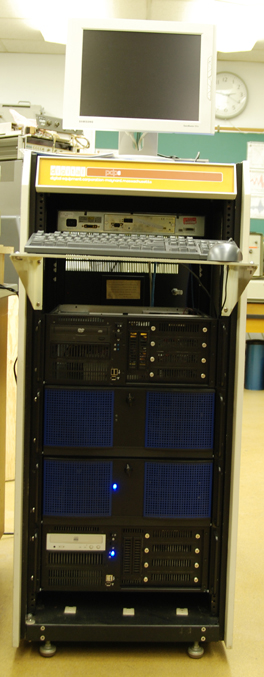
Department of Chemistry
Canada E3B 6E2
| |
| Home |
| News |
| Biography |
| Research interests |
| Laboratory |
| Research group |
| Publications |
| Funding |
| Teaching Philosophy |
| Courses |
| Academic Service |
| Contact |
| CLAMS |
| HOME |
Mattar's Computational Laboratory |
 |
A variety of ab initio computations are carried out in my laboratory. They are performed using clusters of parallel personal computers running 64 bit LINUX. They communicate with one another via the message passing interface (MIPCH) protocol.
A super computer consisting of five rack mounted PCs running LINUX
- Multireference Configuration Interaction (MRD-CI) Computaions. These are the most accurate computations that can be performed. However, they are time consuming and require a large amount of disk space and memory. MRD-CI computations are used to accurately compute the hyperfine and g tensors for small gas phase molecules containing transition metals. Programs used are ORCA and MELD.
- Complete Active Space Self Consistent Field and Moller-Plesset Post Hartree-Fock Computations. These are used to optimize the geometry of small molecules and determine their infrared and Raman intensities and frequencies. These are relatively extensive computations and use programs such as ORCA, DALTON and Gaussian03.
- Density Functional LCAO Self Consistent Field Computations. These computations scale as N^3 instead of N^5 for configuration interaction computations, where N is the number of primitives in the basis set. They are fast and accurate methods. We mainly use them for determination of the electronic structure . Although we have been using density functional methods for over 20 years, they have finally gained recognition after they were implemented in various programs such Gaussian, DeMON, DEMOL etc.
- Hybrid-Density Functional LCAO Self Consistent Field Computations. They are our preferred methods for fast and accurate calculations of the geometries, vibrational frequencies electronic and magnetic properties (hyperfine interactions) of radicals (spin labels), large paramagnetic molecules and half sandwich organometallic transients.

Last modified by S. M. Mattar, February 11, 2008
